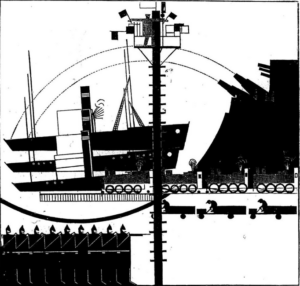Between Sound and Silence: Avraamov’s Symphony of Sirens in Baku (1922)
When: Monday, April 28, 2025, 6:00 PM - 8:00 PM
Where: To be announced to the registered attendees

Centre for Eurasian, Russian and East European Studies (CEREES) event; a screening of Arseny Avraamov's 'Symphony of Sirens in Baku' (1922)
The presentation will be led by Daniel Schwartz, an associate professor in Russian and German Cinemas at McGill University.
The event will be followed by a drink reception.
All are welcome by please register via Book now on Eventbrite.
About the Event
Many of us are familiar with the city symphony films of the 1920s and 30s. We’ve seen or even taught films such as Walter Ruttmann’s Berlin, Symphony of a Great City or Dziga Vertov’s Man with a Movie Camera in classes on the avant-garde, urbanism, and modernism. As we know, these silent films organize the visual elements of urban experience according to musical principles such as rhythm, intervals, scales, harmony, dissonance, and counterpoint. But what if we look — or, rather, listen — past the musical analogy to the sounds of ostensibly silent city symphony films? Then we will perceive something different. Rather than seeing organizational structures, we will hear the sounds of cars, trams, pedestrians, machines, voices, and musical instruments. This talk examines this under explored sonic legacy of the city symphony in terms of non-cinematic works, specifically Arseny Avraamov’s Symphony of Sirens. The Symphony of Sirens (1922) is not a film but rather a mass spectacle. Performed live in Baku, Azerbaijan, it attempted to re-sound the October Revolution through the city’s oil-producing infrastructure on November 7th, 1922. The mass spectacle, I argue, is part of a tendency to treat city space as a sonic medium. It reveals the sonic and ideological qualities of urban networks as channels for waging war, extracting resources, and colonizing space.
Organiser
Organised for the HSSS Research Centre for Eurasian, Russian and East European Studies (CEREES) and supported by IHSS